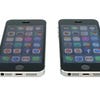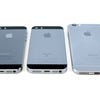Apple iPhone SE review
Can the most powerful small form-factor phone on the market tempt a 5S hold-out?
There was a time when you could always rely on Apple to bring the most powerful smartphone technology to market in the smallest possible form-factor, a proud tradition that persisted up until the release of the iPhone 6. It may well have been a relatively svelte 4.7-incher in a world of 5.5-inch flagships, but for many iPhone users - myself included - it was a step away from a design ethos we valued highly. In theory then, the new iPhone SE is the perfect upgrade for those of us who never bought into Apple's bigger phone concepts. It is almost certainly the most powerful small form-factor phone on the market, but is that good enough?
The SE actually aims to service two potential markets here - people like me who value top-tier performance in a phone that easily fits in your pocket, along with a new breed of user who simply isn't willing to lay out top dollar for a flagship product. In the UK at least, the 16GB base iPhone SE is one third cheaper than the equivalent iPhone 6S - and that's clearly a decent saving as the SE features the exact same A9 processor as the more expensive model, along with a similarly impressive 12-megapixel iSight camera. These two factors alone put the SE into a class of its own.
However, almost everything else is totally unchanged from relatively ancient iPhone 5S. Place the new phone alongside the old and it is impossible to tell the difference. The metallic chassis is totally identical, right down to the 326ppi 1136x640 display and even positioning of the buttons and ports. Having parted with my own money here, familiarity does breed some level of contempt. I've been using the iPhone 5S since launch - a smartphone upgrade represents a high level of investment, and as borderline irrational as it may be, you want to enjoy the look and the feel of a new piece of kit.
You don't get that level of satisfaction with the SE. When the existing design has been a constant companion for the best part of 2.5 years, a new purchase simply highlights some of the issues that have been bothering you for a while now. For example, the four-inch iPhone is a genuine design classic, but those bezels are looking somewhat outsized in 2016. There's the sense that Apple really should have pushed the design on and gone the extra mile. Even the surrounding packaging is exactly the same, generating a remarkable feeling of deja vu.
However, the adherence to the existing design has some tangible, real life benefits. The iPhone SE's internals include a larger capacity battery, and a processor utilising 14nm/16nm manufacturing technology (Apple actually double-sources the A9 chip from different suppliers, TSMC and Samsung). The end result is a substantial increase to battery life compared to the iPhone 5S, and that's quite a big deal. The three-hour train journey from the Digital Foundry office in Essex to Eurogamer's Brighton HQ can see battery life drop by 70 per cent (!) accompanied by some serious heat production, doing nothing more than 4G browsing. The SE is tangibly cooler and longer-lasting, the same journey sapping 30 per cent of the power. In fact, there have been reports of the SE even handing in better stamina results than the iPhone 6S.
There are other benefits too. Because the casing is totally unchanged, all existing gadgets and attachments won't need replacing, up to and including the Flir One thermal imaging camera we used when reviewing the C-Chassis PlayStation 4 revision. However, the most tangible advantage remains the 'pocketability' of the classic iPhone form factor, and the fact that touch-screen navigation is so simple - it can be used one-handed with no problems whatsoever, while areas of the 6/6S screen can seem somewhat inaccessible by comparison.
But the real question is the extent to which the user experience is tangibly improved. I have two iPhones in my household - the 5 and the 5S. The former is running on the latest iOS revision, a decision we regret owing to the obvious degradation in performance. With that in mind, the 5S remained on iOS 8, until I pushed onto iOS 9.3.1 in order to compare it directly with the SE. Interestingly, the 5S is still running quite well - and that's surprising when you look at the raw benchmarks, which illustrate just how much of a leap in performance you're getting when you move onto the A9 processor.
The CPU tests below - Geekbench and 3DMark Physics - are impressive enough, showing a vast increase in performance. Apple has refined the base architecture of its custom ARM cores and is able to run them 430MHz faster. On top of that, system RAM has (finally) doubled from 1GB to 2GB. Graphics benches are positively off the charts - the ambitious GFXBench Manhattan test effectively sees the iPhone SE hand in a 3x increase in performance over the 5S. But the question is to what extent those raw specs actually result in a transformative user experience.
The answer here is fairly clear-cut. If you're still running an iPhone 5, 5C or lower, the improvement even to basic navigation around iOS is impressive. There are still plenty of 4 and 4S owners hanging on to devices I gave up on years ago, and if retaining the form-factor of your existing smartphone is important, the SE is a slam dunk. However, the surprise is that the iPhone 5S still manages to cope fairly well. Obviously it's slower, and Facebook in particularly is noticeably worse, but otherwise, there's little of the annoying friction that inevitably leads to an upgrade purchase.
And remarkably, gaming holds up too - a genuine surprise bearing in mind the colossal improvements in GPU power offered by the cutting-edge A9 processor. Geometry Wars 3 plays identically, while WipEout clone AG Drive, space shooter Galaxy on Fire: Manticore Rising and COD-alike Modern Combat 5 drop a few frames, but remain otherwise very similar. Games with frame-rate caps like Infinity Blade 3 also look and feel much the same. Fractal/mandelbrot exploration app Frax also hands in a very close showing. Only one title really showed game-changing improvement - Warhammer 40,000 Fireblade/Freeblade.

| iPhone SE | iPhone 6S | iPhone 6 | iPhone 5S | iPhone 5/5C | Galaxy S7 | Galaxy S6 | Google Nexus 5X | |
|---|---|---|---|---|---|---|---|---|
| Geekbench Single-Core | 2496 | 2552 | 1605 | 1294 | 701 | 2171 | 1233 | 1263 |
| Geekbench Multi-Core | 4343 | 4464 | 2901 | 2463 | 1267 | 6465 | 3964 | 3436 |
| 3DMark Graphics | 44059 | 41968 | 22824 | 19488 | 5232 | 32404 | 22954 | 22074 |
| 3DMark Physics | 12871 | 12998 | 9385 | 8042 | 8099 | 17730 | 17795 | 12641 |
| 3DMark IceStorm Unlimited | 28638 | 28067 | 17304 | 14797 | 5669 | 27370 | 21565 | 18934 |
| GFXBench T-Rex | 79.9 | 79.7 | 42.8 | 28.9 | 6.9 | 87.0 | 58.0 | 38.0 |
| GFXBench Manhattan | 39.3 | 40.3 | 18.1 | 13.5 | - | 29.0 | 25.9 | 16.2 |
This represents a genuine issue that influences any decision to upgrade your Apple product - and it's a common theme in the previous iOS reviews I've handled. By design, games creators and app designers need to target a broad church of iOS users. Inevitably that means that there's a rule of diminishing returns that kicks in when you run that software on a more capable processor. It seems that the days of games creators rushing out new updates that take advantage of the more advanced silicon are mostly behind us now.
And it may well be that the iPhone 5S remains in the game owing to the fact that GPU power is expended rendering to a relatively low resolution screen. Elsewhere in the iOS line, we see apps targeting Retina resolutions on iPad hardware, often with less capable processors. It seems that the smaller iPhone's smaller display has blessed it with an overhead of sorts that keeps competitive. An interesting case in point is Galaxy on Fire: Manticore Rising. It's aiming for 60fps on the A7-powered 5S, while the Apple TV - using the later A8 - renders at 1080p with a 30fps cap.
In effect, it seems that the biggest advantage of the A9 hardware comes down to future-proofing. You can download and install the latest iOS updates for a while yet without the fear of crippling performance on your device. And you can rest easy knowing that you should get best in class app response, simply by virtue of you running the top-end Apple processor available, even if the actual improvements to real life performance aren't revelatory.
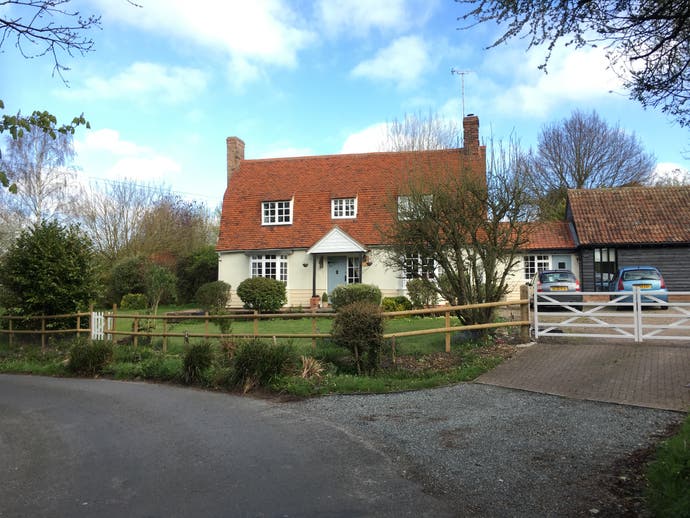
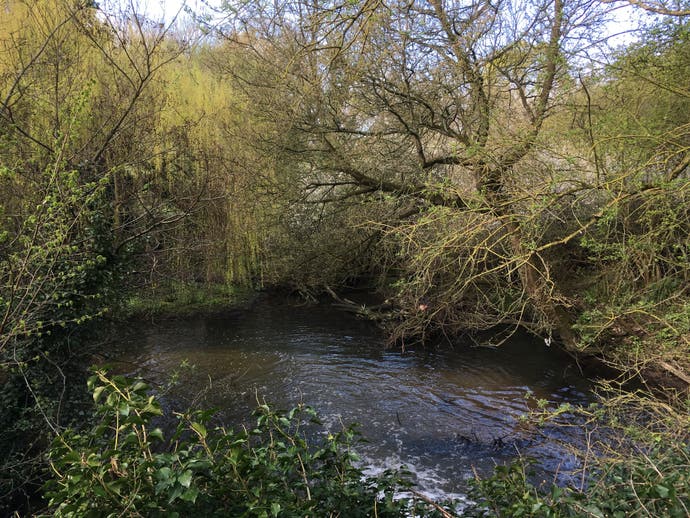

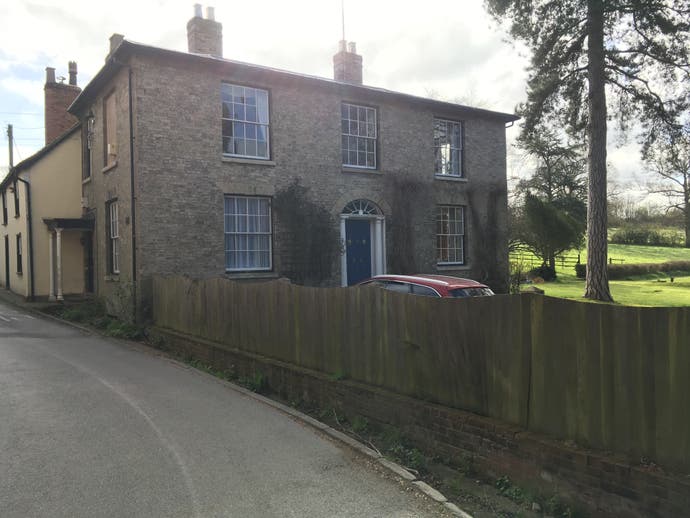
And yes, that 12-megapixel iSight camera is a beauty, capable of some excellent results in daylight, and even handing in acceptable results in low light. The SE may lack the '3D Touch' functionality of the 6S, but features like Live Photos still work on the new phone. However, the front-facing camera isn't a match with the more expensive iPhone - it's a sub-par 1.2-megapixel effort that predictably hands in less than stellar results, something worth bearing in mind for the selfie-inclined. It seems that costs did need to be cut somewhere beyond the use of the existing case and screen.
Other improvements over the 5S are minimal - 4G LTE band coverage is seemingly expanded, but we noted identical performance with our provider (UK supplier, Three). This is one area where we really wanted to see some improvement over the 5S, but based on sub-par results up against a Samsung Galaxy Note running side-by-side on the same provider, we can only conclude that the smaller form-factor of the SE directly limits the size of the antenna, and thus the amount of bandwidth available when there's some distance with the nearest cell mast.
Also frustrating is Apple's continuing, baffling insistence on supplying a miserly 16GB of storage with the entry-level device. Both the previous iPhone 5 and 5S I used had 64GB, and years' worth of video and pictures have gradually built up. Sometimes it's nice to cycle back through memories, and across the years, I've never hit the device limits. These days, iOS sucks up 4.5GB of space, making the base level iPhone a needlessly constrictive device I managed to tap out after mere hours of testing. NAND isn't expensive and an extra 16GB of storage would barely touch the iPhone's bill of materials, yet Apple persists with meagre storage here. Perhaps there's an argument for bargain-basement storage on a cheaper Apple device, but that does somewhat fall flat bearing in mind that the LG G4 is at least £60 cheaper than the SE, with a 1440p screen and - yes - 32GB of storage. And looking towards the more expensive Apple phones, a base 16GB of storage on a £540 iPhone 6S is astonishingly mean and actively impactful on the user experience.
Apple iPhone SE - the Digital Foundry verdict
Designed to please older iPhone purists, while also opening up Apple technology to a larger, wider market via a cheaper price-point, the SE is a carefully calculated, well-delivered device. It's clearly and obviously not as good as it could have been, but many of its deficiencies are quite easy to forgive bearing in mind that Apple has lopped off a third of the price compared to the iPhone 6S. Some innovation in the utilisation of real estate would have been the icing on the cake, but as things stand, this is a classy device that should be available relatively cheaply on contract deals.
For those looking at a highly potent, small form-factor phone, the SE works simply because there's no competition. With rare exceptions like the (larger) Sony Z3 Compact, Android devices with top-end specs have all moved into five-inch territory and beyond. As well as appealing to this particular audience, by integrating the A9 processor into the classic chassis at a reasonable price-point, the SE comes across as a love letter to those - like me - who just didn't want a larger iPhone.
I put my money where my mouth is by purchasing the SE, but I ended up returning it - the whole user experience was simply too close to the product I already own. It may not have been quite the revelatory upgrade I was hoping for, but that's not to say that this product doesn't deserve kudos. The purchase criteria here is pretty straightforward. If you're looking for a small phone with big power, it's a great buy. If you're running an iPhone 5 or older iOS device, the performance upgrade is palpable and well worth the money. However, 5S owners like me sit on a borderline - for now at least, it remains a good phone, and the SE doesn't quite offer quite enough to justify the money.





